Why you can trust Tom's Hardware
To read about our monitor tests in-depth, please check out Display Testing Explained: How We Test PC Monitors. We cover brightness and contrast testing on page two.
Uncalibrated – Maximum Backlight Level

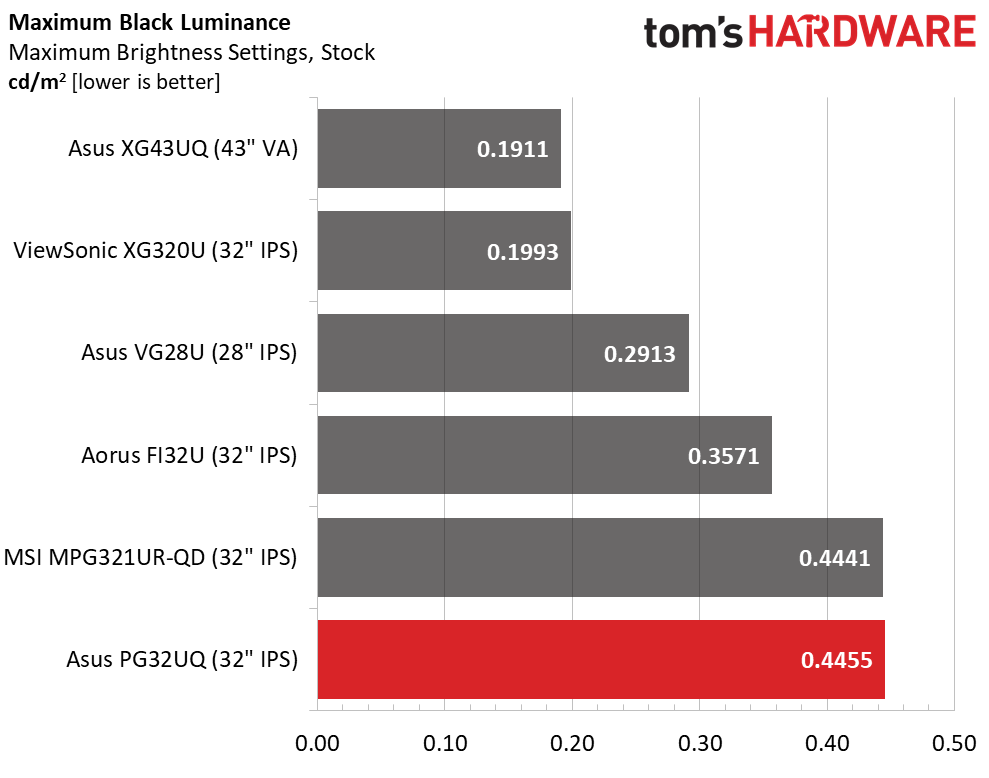
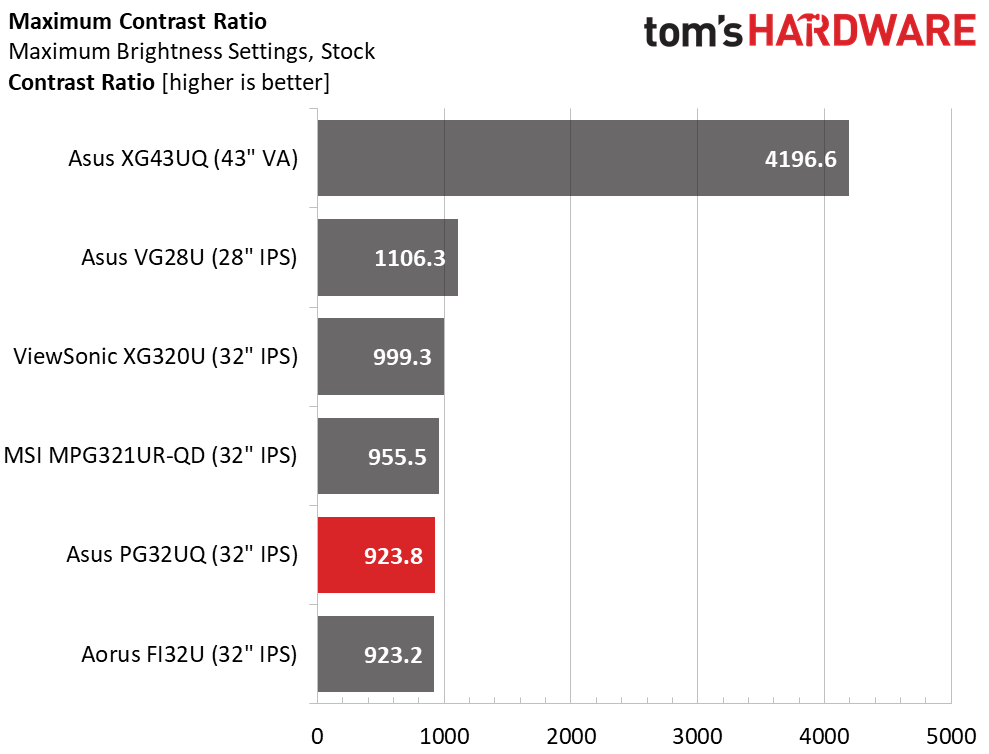
The PG32UQ has more than enough light output to accommodate any environment. 400 nits on a 32-inch monitor is really bright, too bright for more than a few minutes. However, that headroom is handy when using the ELMB sync, which robs about 30% of that output.
Black levels are IPS-average, with the PG32UQ finishing last in the default test. If you engage Dynamic Dimming, it’s much lower at around 0.1823 nits. The panel’s native contrast is 923.8:1, which is slightly below average. Dynamic Dimming bumps that up to 2,250:1. You can use that feature without penalty. It doesn’t crush highlight or shadow detail.
After Calibration to 200 nits
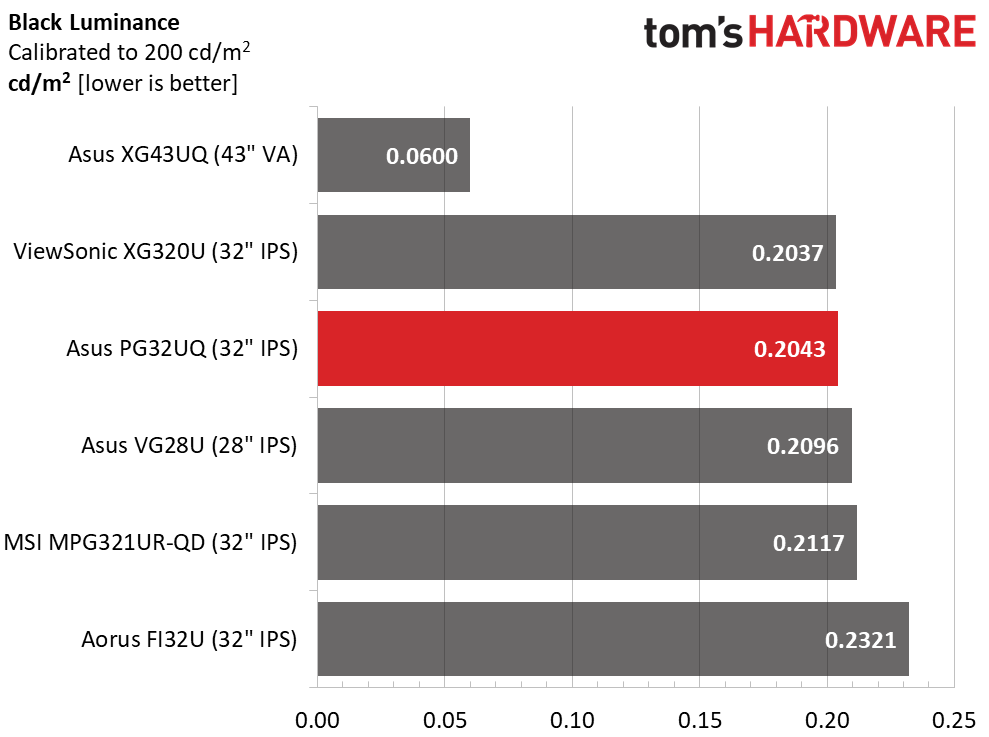
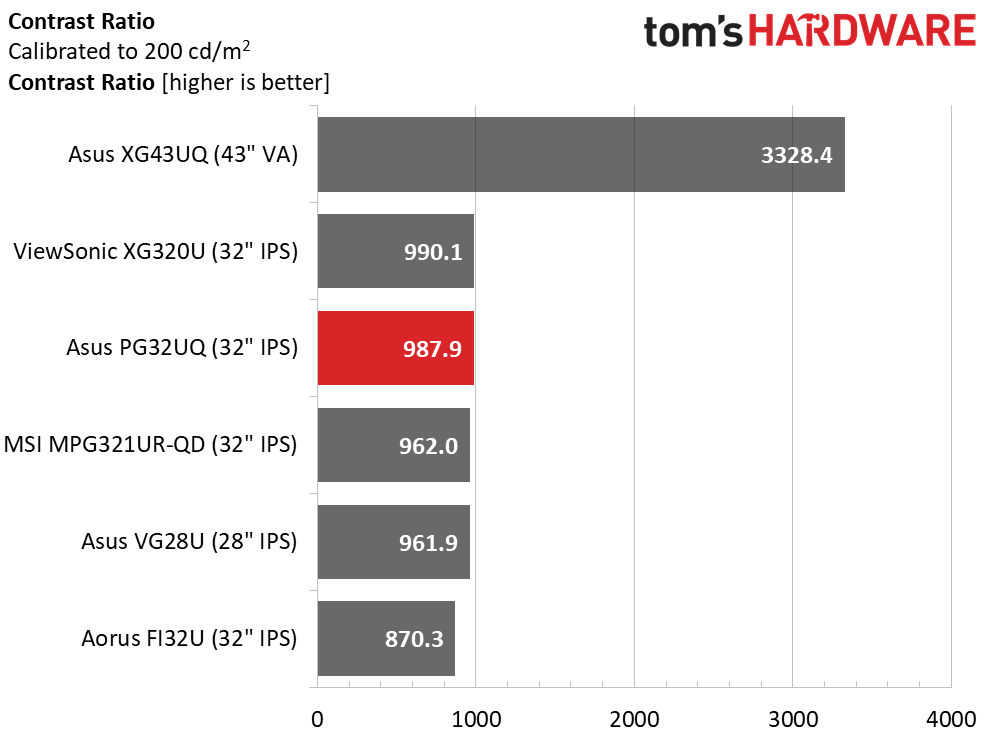
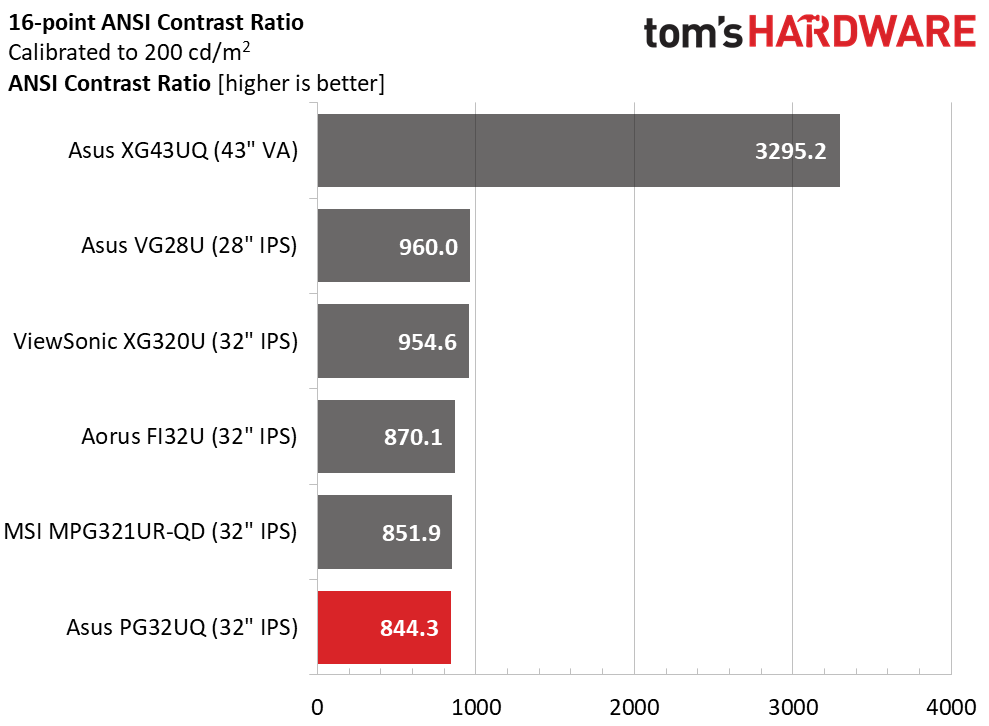
Calibration improves black levels and contrast slightly to 987.9:1 in the PG32UQ’s native state with Dynamic Dimming turned off. When engaged, contrast is around 2,300:1. Part of this comes from my decision to select the 2.5 gamma preset. It measures around 2.3 and adds some depth to the image.
The slight hotspot I mentioned earlier drops the PG32UQ’s ANSI score a little to 844.3:1. Again, Dynamic Dimming will help here by upping real-world contrast to around 2,000:1. That, combined with the 2.5 gamma setting, creates a richly saturated picture full of detail and dimension.
Get Tom's Hardware's best news and in-depth reviews, straight to your inbox.
Current page: Brightness and Contrast
Prev Page Response, Input Lag, Viewing Angles and Uniformity Next Page Grayscale, Gamma and Color
Christian Eberle is a Contributing Editor for Tom's Hardware US. He's a veteran reviewer of A/V equipment, specializing in monitors. Christian began his obsession with tech when he built his first PC in 1991, a 286 running DOS 3.0 at a blazing 12MHz. In 2006, he undertook training from the Imaging Science Foundation in video calibration and testing and thus started a passion for precise imaging that persists to this day. He is also a professional musician with a degree from the New England Conservatory as a classical bassoonist which he used to good effect as a performer with the West Point Army Band from 1987 to 2013. He enjoys watching movies and listening to high-end audio in his custom-built home theater and can be seen riding trails near his home on a race-ready ICE VTX recumbent trike. Christian enjoys the endless summer in Florida where he lives with his wife and Chihuahua and plays with orchestras around the state.
-
blacknemesist Replybolweval said:How is it that we can buy a 55" 4k TV for $300 but a 32" 4k monitor is $1000?
Supply and demand and the fact that this is still a very niche market therefore "new" hence pricy and outdated.
Also 55'' for PC is not an option for anyone. -
emitfudd I've been looking for a monitor with these specs for a long time. Then I read a bunch of recent 2022 reviews for this exact model on Amazon and the majority of them were bad. Monitor died, bad pixels, etc. There are also a lot of comments that you can only get to 120Hz with 4K. What is the point of 155Hz if you can't use it?Reply -
drivinfast247 Reply
That $300 dollar 4k TV will have garbage picture quality no VRR and more than likely horrendous input lag.bolweval said:How is it that we can buy a 55" 4k TV for $300 but a 32" 4k monitor is $1000? -
gggplaya Replybolweval said:How is it that we can buy a 55" 4k TV for $300 but a 32" 4k monitor is $1000?
It's called economies of scale, 32" 4K Tv's sell very little. It's a niche segment.
Now LG is making a 42" OLED 120hz panel which will start selling in several TV brands like LG and Sony, as well as ASUS. That will have enough economies of scale to keep the price somewhat ok, thanks to the console market.